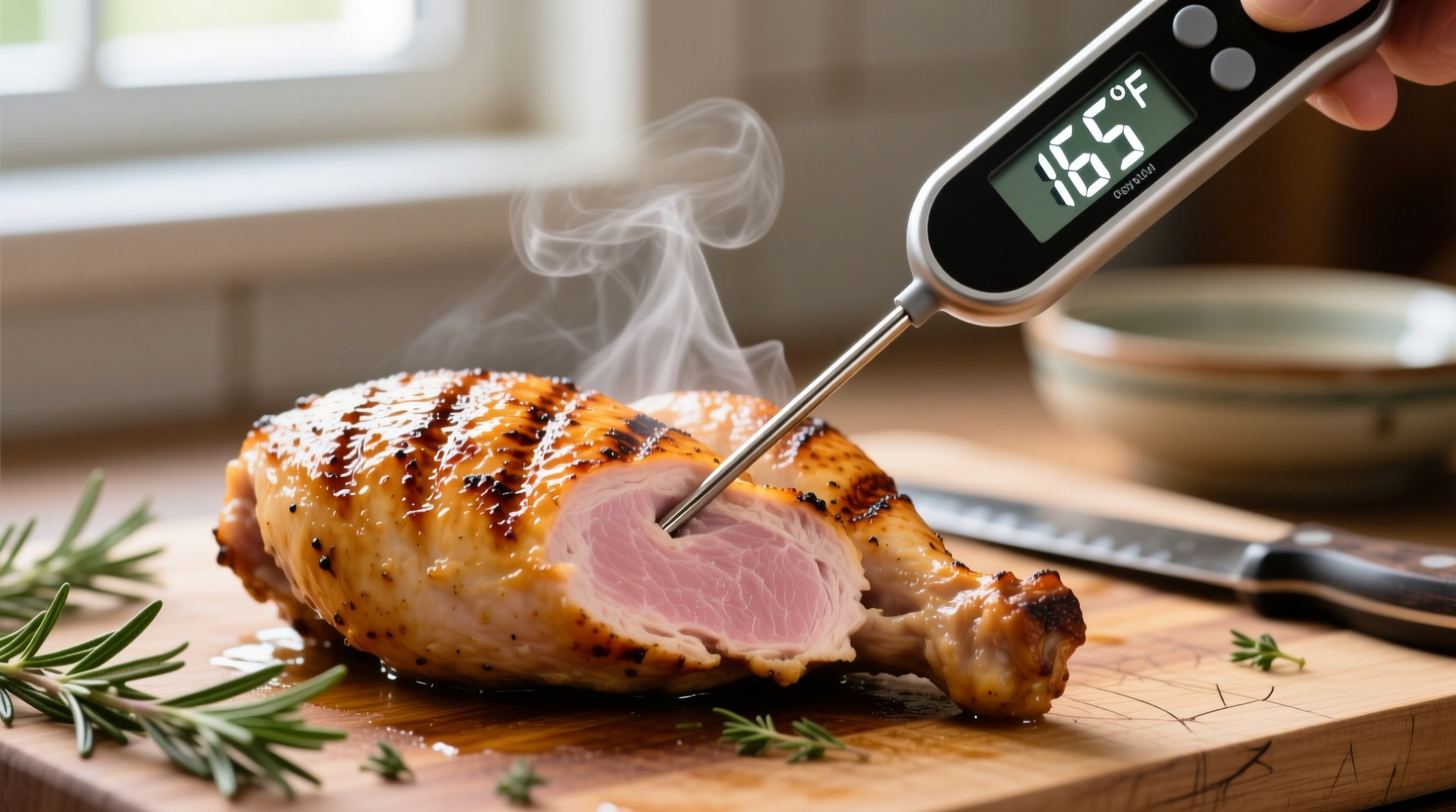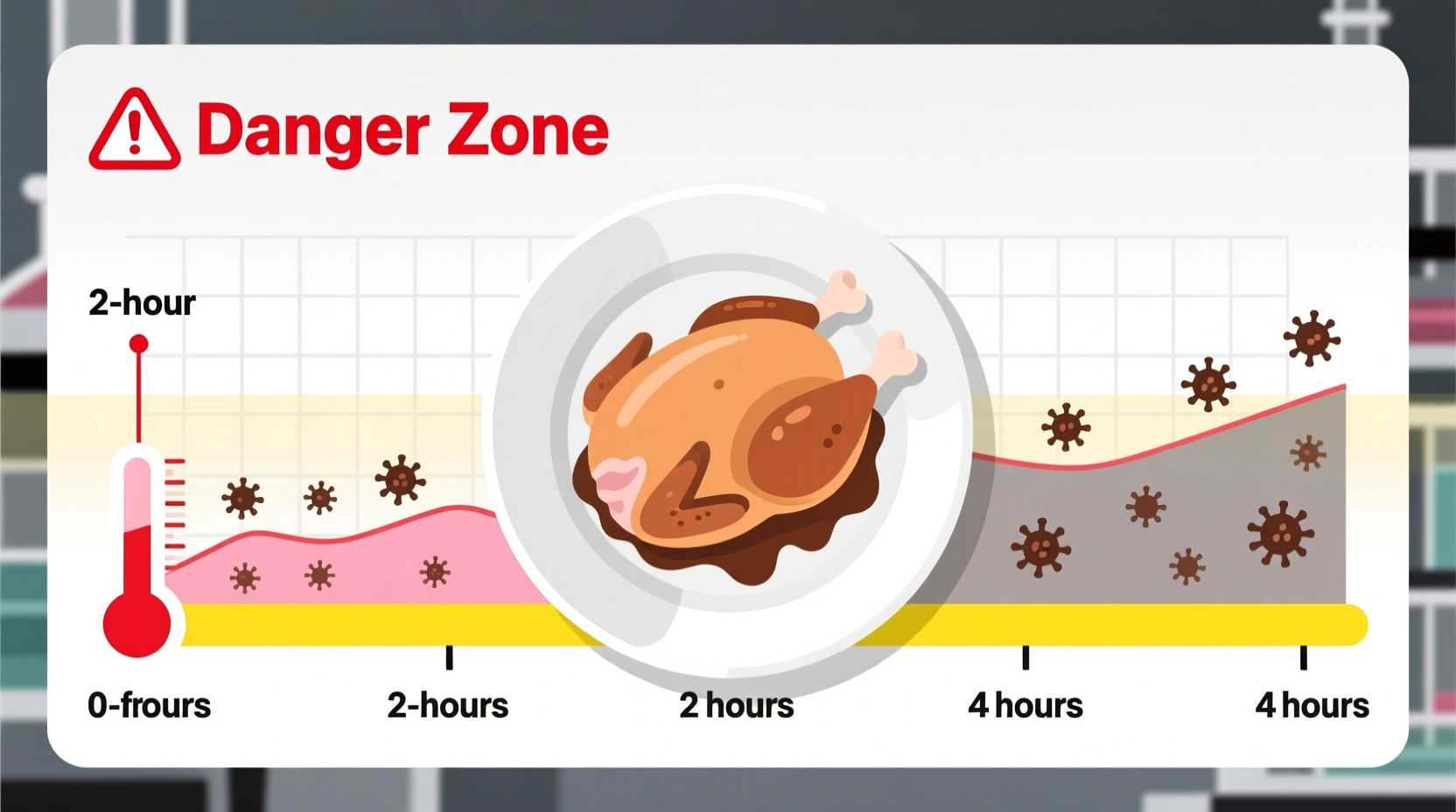Understanding exactly how long cooked meat can safely remain unrefrigerated isn't just about convenience—it's your first line of defense against food poisoning. Each year, one in six Americans suffers from foodborne illness, with improper food handling being a leading cause. This guide delivers the precise time limits, scientific explanations, and practical strategies you need to keep yourself and your family safe.
The Science Behind the 2-Hour Rule
When cooked meat enters the temperature "Danger Zone" between 40°F and 140°F (4°C to 60°C), bacteria multiply rapidly. The USDA Food Safety and Inspection Service confirms that harmful pathogens like Staphylococcus aureus, Salmonella, and E. coli can double in number every 20 minutes within this range.
Here's what happens during those critical hours after cooking:
| Time Since Cooking | Bacterial Growth | Food Safety Status |
|---|---|---|
| 0-30 minutes | Minimal growth | Safe for consumption |
| 30-60 minutes | Noticeable increase | Still safe, but monitor closely |
| 60-120 minutes | Exponential multiplication | Approaching danger threshold |
| 120+ minutes | Hazardous levels reached | Unsafe to consume—discard immediately |
This timeline comes directly from the USDA's Bacteria and Food Safety documentation, which tracks bacterial proliferation under controlled laboratory conditions.
When the 2-Hour Rule Changes: Critical Temperature Factors
While the standard guideline allows 2 hours for cooked meat left out, environmental conditions dramatically alter this timeframe. The FDA Food Code specifies that when room temperature exceeds 90°F (32°C), the safe window shrinks to just 1 hour. This adjustment accounts for accelerated bacterial growth in warmer conditions.
Consider these real-world scenarios that require stricter time management:
- Outdoor gatherings: At a summer barbecue with temperatures around 95°F, cooked burgers become unsafe after 60 minutes
- Insulated containers: Even when using warming trays, meat remains in the Danger Zone unless maintained above 140°F
- Cut versus whole meats: Sliced or shredded meats (like pulled pork) enter the Danger Zone faster than whole roasts due to increased surface area
According to research published in the Journal of Food Protection, ground meats reach unsafe bacterial levels 30% faster than whole muscle cuts under identical temperature conditions.
Practical Food Safety Strategies You Can Implement Today
Knowing the time limits is only half the battle—you need actionable methods to keep cooked meat safe. Professional kitchens follow these evidence-based techniques that you can easily adapt at home:
Safe Cooling Methods for Leftovers
Instead of leaving meat to cool on the counter, use these faster cooling techniques:
- Divide and conquer: Transfer large quantities into shallow containers no deeper than 2 inches to accelerate cooling
- Ice bath immersion: Place sealed containers in ice water while stirring contents for rapid temperature reduction
- Cold spot monitoring: Use a food thermometer to verify the thickest part has reached 40°F or below before refrigerating
Transportation Safety Protocols
When taking cooked meat to potlucks or events:
- Maintain temperatures above 140°F using insulated carriers with heating elements
- Keep cold foods below 40°F in coolers with ice packs
- Never leave insulated containers in hot vehicles for extended periods

Debunking Dangerous Food Safety Myths
Many home cooks operate under dangerous misconceptions about cooked meat safety. Let's examine the facts:
Myth: "If it smells fine, it's safe to eat"
Pathogenic bacteria like Salmonella and E. coli don't always produce noticeable odors or visible spoilage. The USDA confirms that food can appear and smell normal while containing dangerous levels of pathogens.
Myth: "Reheating makes previously unsafe food safe"
While proper reheating kills bacteria, it doesn't eliminate heat-stable toxins produced during the Danger Zone period. Staphylococcus aureus, for example, creates toxins that remain dangerous even after thorough reheating.
Myth: "A little time over the limit won't cause problems"
Food safety isn't binary—it's a spectrum of risk. Each additional 20 minutes in the Danger Zone potentially increases bacterial load tenfold. The CDC reports that even brief temperature abuse can trigger outbreaks, as seen in multiple documented cases of foodborne illness from improperly handled leftovers.
Special Considerations for Different Meat Types
While the 2-hour rule applies universally to cooked meats, certain varieties require extra caution:
- Poultry: Cooked chicken and turkey enter the Danger Zone faster due to higher moisture content
- Ground meats: Increased surface area allows quicker bacterial penetration
- Stuffings and casseroles: Dense preparations cool slower, extending Danger Zone exposure
- Marinated meats: Acidic components may slow but don't prevent bacterial growth
The FDA emphasizes that moist, protein-rich foods like cooked meats provide ideal conditions for bacterial proliferation regardless of preparation method.
When in Doubt, Throw It Out: The Only Safe Approach
No food safety expert would recommend consuming meat that's exceeded the recommended time limits. The USDA's FoodKeeper app and Food Safety Education staff consistently advise: "When you're unsure how long something has been out, err on the side of caution."
Consider these red flags that indicate cooked meat has been compromised:
- Visible mold or unusual discoloration
- Slippery or sticky texture
- Sour or unpleasant odors
- Extended time in the Danger Zone
Remember that foodborne illness symptoms often don't appear until 12-72 hours after consumption, making it difficult to connect your illness with improperly stored leftovers.
Essential Food Safety Resources
Stay updated with the latest food safety guidelines through these authoritative channels:
- USDA Food Safety and Inspection Service
- FDA Food Code
- CDC Food Safety Resources
- FoodSafety.gov (U.S. government portal)











 浙公网安备
33010002000092号
浙公网安备
33010002000092号 浙B2-20120091-4
浙B2-20120091-4